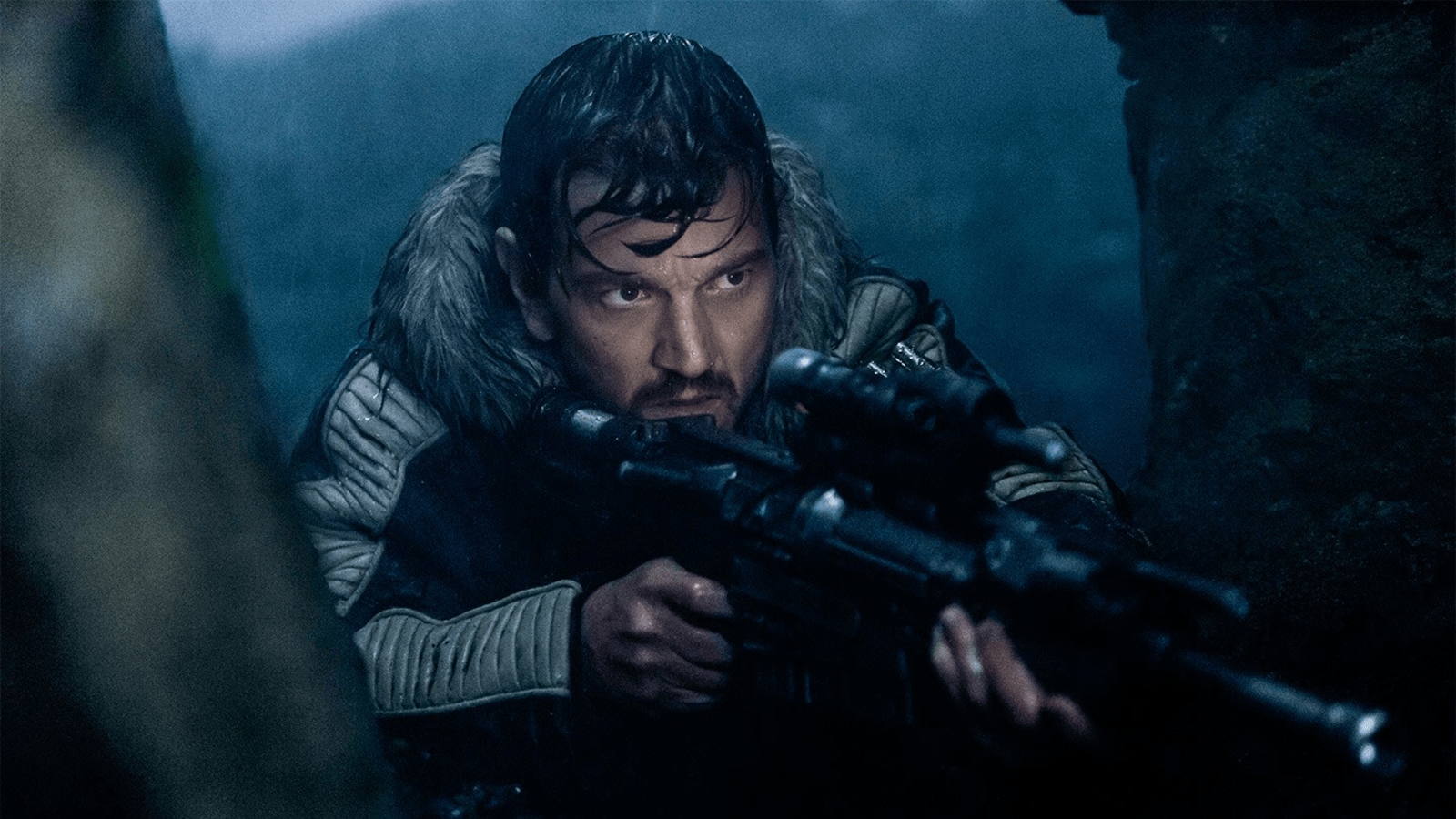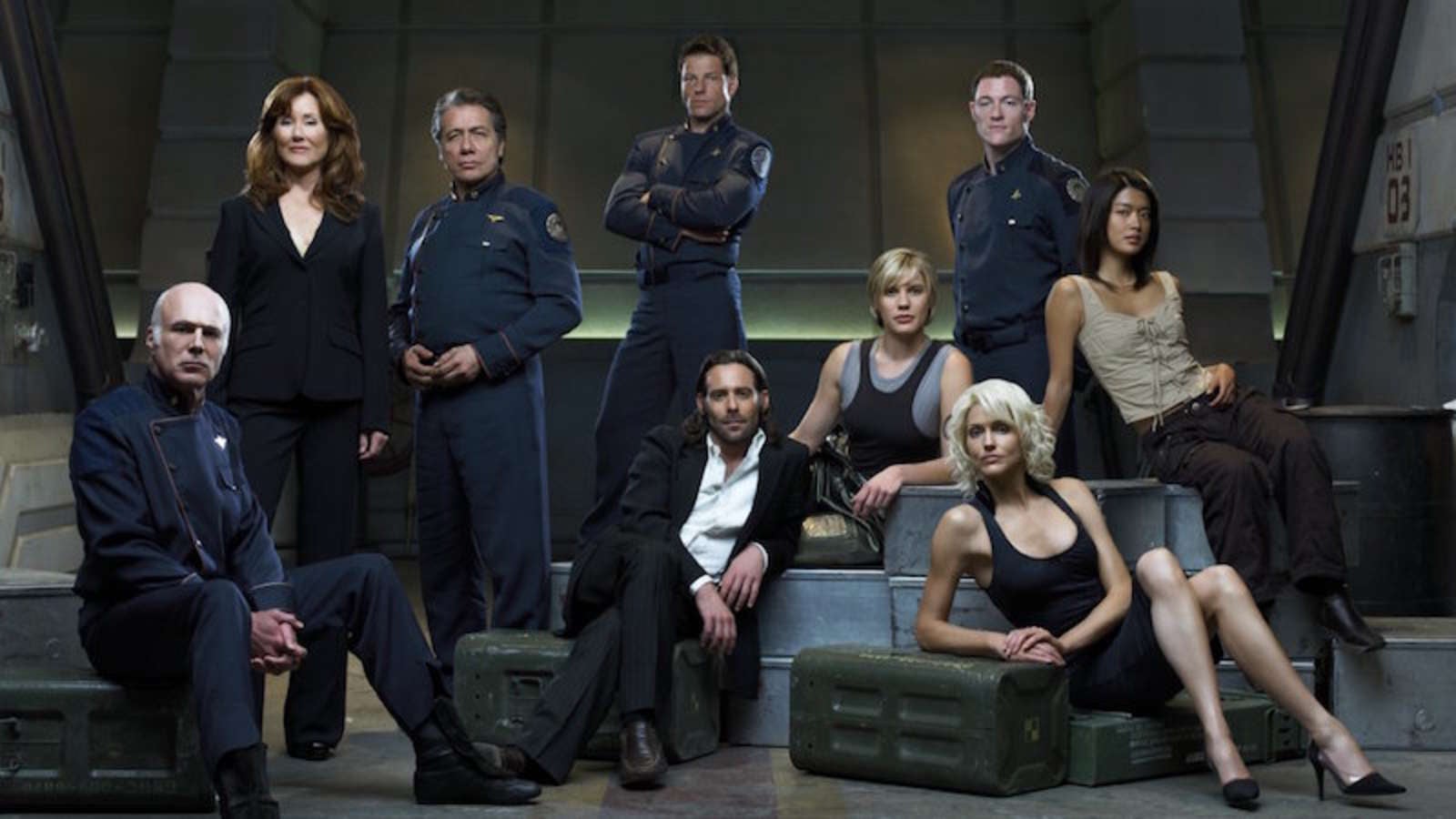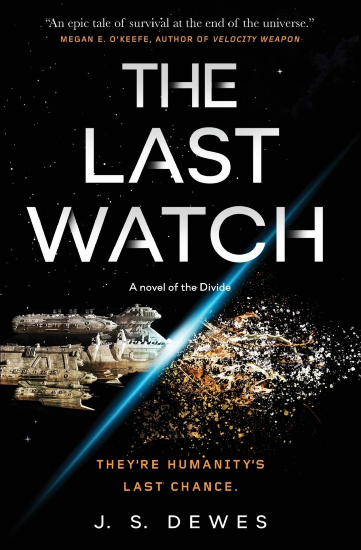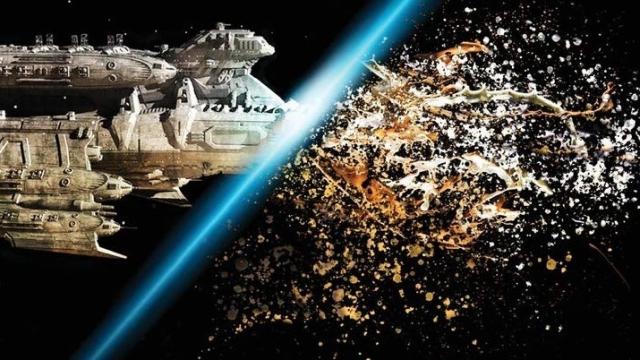From For All Mankind to Space Sweepers, every day more great sci-fi adventures grace our screens both big and small. All signs point to a sci-fi renaissance filled with reluctant heroes, scrappy misfits, and snarky sentient robots. Of course, I can’t forget one of the most quintessential staples of the genre: the epic space battle. Massive energy weapons firing from colossal battleships, sleek starfighters zipping past exploding support ships, and our heroes accomplishing feats of (often erroneous) physics our earth-bound minds can hardly fathom.
But are cool ships, big explosions, and striking visuals all that’s needed to make a space battle great? As both a filmmaker and author, I love picking apart sequences and peeling back the layers to reveal the gooey thematic insides. Keep reading for some cinematic insight into three very different but equally impactful sci-fi battle sequences! (Light spoilers ahead.)
Rogue One

What the Movie Consistently Gets Right
Though by no means a perfect film, for me Rogue One gets a ton of points simply for being one of the most Star Wars feeling of Star Wars films. From the ships and weapons to costumes and makeup, everything feels dirty and genuine and incredibly lived. (Sounds basic, but weathering is a crucial immersion detail too often overlooked in SFF.) In the same vein of gritty realness, Rogue One’s reliance on practical effects bolstered by perfectly blended CGI makes the VFX easily some of the best of any Star Wars film. Practical effects are often used even for distant background action, all executed with great precision and attention to detail that creates a layered sense of realism that roots the audience to the story and characters in a way not easily achieved in just two hours of runtime.
The Battle of Scarif
Though there are plenty of great space battles in the Star Wars repertoire to choose from, this near-perfect example of an intercut ground and space battle made Rogue One an easy choice. This sequence carries a lot of weight on its shoulders, more so than similar climax sequences due to the fact that (most of) the audience already knows how the movie will end. And yet Rogue One’s Battle of Scarif stands on its own as a cinematic tour de force even outside the context of A New Hope, managing to build nail-biting tension through the sheer piling-on of conflict points.
So very much happens in this almost 30-minute sequence, and nary a second is wasted, only rarely cutting away to Uncanny Valley Tarkin or the Rebel base. The whole thing feels messy and slapdash and desperate — all themes consistent throughout the film, and in line with what we expect to see from a scrappy rebel army. Yet despite that chaos, the filmmakers have made it incredibly easy for the viewer to follow what’s going on.
One thing this sequence accomplishes masterfully is in how it utilises shot design and editing to link the three facets of the battle — ground, air, and space. Most of these mini-action sequences play out via shots designed to place us in the rebels’ shoes — from their cockpits, over their shoulders as they scramble to new positions, low angles matching their eye line as they look up to the air battle overhead, etc.
In one great example, we see a cockpit POV of a fighter about to go down, then cut to an exterior shot as that ship crashes, only to have that same shot move down to create a new establishing shot for the ground battle with rebels running frantically in the foreground. These dual-purpose shots not only make for smooth visual pacing, but tie the sequence together to create a sense of many small pieces working together to achieve a whole: this engagement isn’t about big ships vs. big ships or big strategies vs. big strategies, but rather one frantic, desperate move after the other — all contributing to an ongoing metaphor for the rebellion.
Another of my favourite details happens early in the ground firefight when a random rebel gets shot and his equally random buddy nearby screams “NO!” and runs to him. It’s a small thing you might not even notice on first viewing, but similar instances occur a handful of times — unnamed, faceless people get lines and emotions and take critical actions to advance the rebels’ progress in a way not often seen in other films, where they’d traditionally be nothing more than additions to the body count. A similar situation happens again when a soldier is raised on comms and told to find the “master switch,” and we get a conversation between two (technically named but essentially random) characters. The short exchange almost feels like a behind-the-scenes look — the true, nitty-gritty rebel soldier experience, versus the broader view of explosions and destruction we so often see in sci-fi battles.
We see this yet again when the rebel fleet finally arrives, and in a brilliant editing choice, we don’t get the classic “cavalry has arrived” epic sweeping shot of the fleet warping into frame. Instead, we see their arrival to Scarif through the direct POV of a fighter pilot — once again putting us in the shoes of the everyday person and creating a sense of intimacy with the rebel forces.
Small details like this all work toward engaging the audience emotionally, furthering the intrinsic sense of community and frenzied nature of the engagement. It’s not only up to our heroes to save the day — every person is critical to the success of the mission. Closer to the end, when the rebel fleet admiral — another essentially random character — makes a major decision that changes the course of the battle by sacrificing a rebel ship in order to send a disabled star destroyer careening into its neighbour. Questionable physics aside, this quintessentially desperate move results in the second most beautiful battle shot in all of Star Wars (the Holdo manoeuvre inarguably in first place) as the two star destroyers totally annihilate each other. Beautifully reckless tactics are what really set this entire engagement apart from a typical space battle, and to great effect.
That moment is as much a turning point for the viewer as it is for the rebels, as the audience is allowed to (briefly) breathe for the first time in over twenty minutes. However, soon the Death Star rises like a murder moon over the horizon, the sound design goes muted, and ships just start dying quietly under a bittersweet orchestral score. Then, to cap off half an hour of straight tension, we’re rewarded with easily one of the best pay-off sequences in cinematic history as Vadar absolutely destroys that corridor. Say what you want about the film as a whole, but hot damn.
Battlestar Galactica, “Resurrection Ship, Part 2”

What the Series Consistently Gets Right
Invariably the first well-done element that comes to my mind when thinking about space combat in Battlestar Galactica is the almost “handheld” motion of the camera — one that continually adapts (and at times almost hunts) in both scale and focus while zeroing in on the action. It’s a style established early on and returned to almost without exception as a device to instantly evoke tension — when we’re outside the ships, it’s immediately obvious from the motion of the camera whether we’re in trouble or not.
A major element BSG consistently gets right is that it keeps it simple, both with the components of the battle and the choreography. There are generally only two units of any consequence on either side: battleships and fighters. We’re primed early on in the series about the capabilities, strengths, and weaknesses of each ship, and because we know the rules, aren’t overwhelmed by sheer possibilities, paving the way for us to follow engagements clearly while still allowing for surprises when creative tactics are employed.
Similarly, the physical blocking of the battle is typically kept very simple: Battlestars and basestars are almost never manoeuvred, ensuring a static lay of the battlefield that greatly diminishes potential disorientation. Both elements contribute to a subtle simplicity that allows the audience’s focus to stay where it should: the story and characters.
Which leads to yet another thing BSG is great at: personification. A massive fight with a thousand ships can make for great eye candy, but we can’t possibly care about a thousand individual ships. Creating a strong link between the characters and their ships is critical to establishing stakes in an otherwise faceless battle. BSG is consistently generous with CIC and cockpit shots, so we always know who is where, and thus who’s in trouble as things get chaotic.
The Battle of the Resurrection Ship
After discovering a Cylon resurrection ship, the Galactica and Pegasus work together to generate a plan to destroy the vessel. Meanwhile, both Adama and Cain scheme to seize command by executing the other after the engagement concludes.
Though I originally intended this as an example of a more “classic” space battle, there’s actually a lot going on in this sequence that doesn’t follow typical convention — for the show itself, or cinematic sci-fi as a whole. This is a situation where the battle itself is almost beside the point — the well-planned, perfectly executed attack ultimately serving as one giant counterpoint to the human drama unfolding on the ship. This is reflected from the very first shot of the battle, when instead of the aforementioned frenzied handheld camera style we’ve come to expect, we instead get one long shot — which still hunts and changes focus, but does so in a surprisingly slow, steady manner.
This subversion is almost unnerving at first but quickly lures us in with the promise of spectacle as we’re allowed to watch the battle unfold in a much clearer, cleaner way than most other action sequences in the show. We begin to see these contrasting elements even more clearly when Lee’s fighter takes a hit and he’s ejected into open space. A typical space battle establishing shot lacks any kind of true point of view, often seen from an omniscient standpoint somewhere far off to one side of the field of battle. But here we get to see our wide, dramatic establishing shot directly from over a character’s shoulder as he floats helplessly in space, rooting us not only positionally but thematically as Lee’s disillusionment with the state of human affairs escalates.
And really, the entire rest of the battle serves to impress this disillusionment on the viewer. It’s clear the entire time that the humans have the upper hand, and yet we don’t get a single exuberant victory shot or the triumphant music one might expect. Instead, we’re presented with a series of long, sweeping, silent shots of the Cylons’ resurrection ship being destroyed, continued via more of the much steadier, smoother camerawork and long takes. In one haunting shot, we get a detailed view of hundreds of Centurions as they’re ejected into space.
Though the narrative continues to assure us our heroes are “in the right,” we’re still made to feel the Cylon’s vulnerability as this closely guarded secret ship is laid bare to open space in such primal detail — all serving as subtle foreshadowing for the series’ upcoming questions of morality as the lines between human and Cylon continue to blur.
A well-planned, well-executed space battle with hardly a single mishap should run the risk of feeling tedious or even boring, and yet this sequence is anything but due to the thematic tie-in of our heroes’ “success.” The cinematography, editing, music, and sound design all reflect that choice — even the CGI is cleaner and better looking than most of the rest of the show. Though atypical of most, this battle is beautiful and well-executed both diegetically and non-diegetically, resulting in a sequence that’s much better than the sum of its parts — something that should be the aim of any great action sequence.
Serenity

What the Movie Consistently Gets Right
Getting us to care enough about the characters to make what the filmmakers pull off in this incredibly brief sequence possible. Oh, and witty banter.
The Universe Battle
After learning of the Alliance’s horrific cover-up, the crew of the Serenity races to Mr. Universe’s planet so they can expose the evidence to the public. With an Alliance fleet awaiting their arrival, they lure an enraged Reaver fleet behind them to act as cover while they make a break for the planet.
The baiting of the Reaver fleet kicks this sequence off with a very quintessential Firefly reversal of expectation — and from this very first decision, the audience is given perfect footing. Though we’re about to experience a very not quintessential Firefly sequence in the form of a massive fleet battle the likes of which the film nor series has seen before, it feels like we are about to experience a very quintessential Firefly sequence, all because our scrappy crew used a smart, dangerous, desperate tactic to get themselves there. This same framing is maintained throughout the battle, with the combat serving as a backdrop for the Serenity’s gauntlet through a maze of destruction.
Unlike the other two examples, once the battle actually begins, we never see a single omniscient point of view or even the point of view of another ship involved — friend or foe. This acts as a consummate example of the aforementioned “personification” of ships: the Serenity itself acts as the POV character through which we experience the entire battle, with literally every single shot in the sequence at least beginning with its focus on the ship, only panning (but never cutting) away a few times to briefly showcase some awesome mini-brawl happening in the chaotic Reaver/Alliance battle.
Despite our “main character” not being involved in the actual fighting, the stakes are arguably even more keenly felt than a typical battle sequence. Not only due to the frantic pace of the choreography and editing, but because the ship itself is filled with literally every single remaining character we care about. Only our ride-or-die crew matters at this point, so — ironically, as far as grandiose space battles go — we don’t even care about the engagement itself except in the cover it serves for their escape. Speaking of, this one gets full marks for geography. Excellent directionality is maintained throughout (Alliance baddies go left to right, heroes and Reavers go right to left), giving a clear understanding of the layout of the battlefield and movement of various vessels — atypical of a lot of space battles which tend toward a “from all directions!” chaos approach.
This is bolstered by another atypical decision in that we get mostly sweeping, steady, long takes of the action. The shot duration makes these protracted sequences easy to digest, and yet they still feel dense and chaotic since they’re so rife with action. Every shot has a ton of different things going on, and you could rewatch a half dozen time and still miss plenty.
Another great feature of this battle that might otherwise be easy to overlook is the sound design — simple in execution but big on impact. It’s muted and selective to start, building steadily as the scene progresses, more and more layering on until a full complement of sound effects are depicted. The viewer finds themselves slowly bombarded with sounds much like our characters are slowly bombarded by stress as they run their gauntlet.
This choice is just one of the many details about this sequence that keeps tensions high even as they enter atmosphere, the main battle falls away, they crash-land on the planet, and their gambit is successful — though not without both witty dialogue and serious consequences, in proper Firefly fashion.

Gizmodo thanks filmmaker and author J.S. Dewes for sharing their favourite space battles with us. It’s something you can experience more of in her debut novel The Last Watch is available now from Tor Books.
